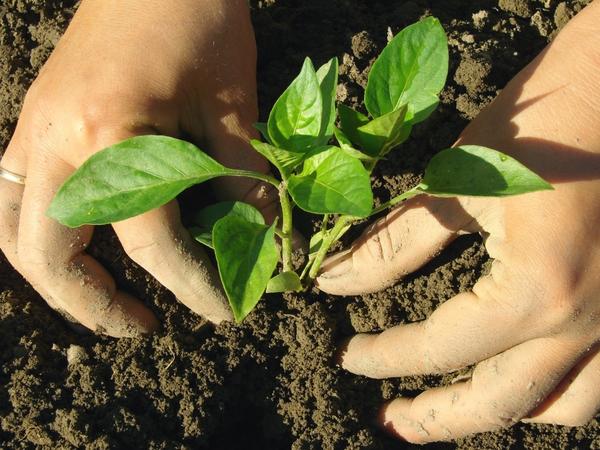 Sweet pepper, or as it is called “Bulgarian” in our country, is rich in useful elements, has a bright juicy taste and reproduces fairly well in the difficult climatic conditions of Russia. Therefore, this vegetable was so fond of our compatriots.
Sweet pepper, or as it is called “Bulgarian” in our country, is rich in useful elements, has a bright juicy taste and reproduces fairly well in the difficult climatic conditions of Russia. Therefore, this vegetable was so fond of our compatriots.
It’s rare in any garden to meet this culture. Peppers are planted mainly in open ground, since the seedlings take root well, peppers grow together, and it is quite easy to care for them.
Content
- 1 How to plant pepper in open ground
- 2 Preparation of seeds for sowing
- 3 Sowing seeds
- 4 Planting seedlings in the ground
- 5 Seat selection
- 6 Soil preparation
- 7 Landing time
- 8 Landing plan
- 9 Planting seedlings
- 10 After landing care
- 11 Watering pepper
- 12 Loosening
- 13 Feeding
- 14 Leaf pruning:
- 15 Protection against diseases and pests
- 16 Reviews
How to plant pepper in open ground
The cultivation of this culture begins with the timely and competent planting of seedlings. The whole crop depends on this stage, therefore, the process of sowing seeds, as well as the cultivation of pepper seedlings, must be taken very responsibly.
Preparation of seeds for sowing
Sweet pepper, as well as other main crops in our country, is grown through seedlings. Usually sowing pepper seeds for seedlings is carried out in mid-March, so that by the end of May, plant bushes in open ground. Of course, the timing of sowing seeds varies slightly depending on the varieties of pepper. If we are talking about early varieties, then sowing is carried out in mid-March, if late varieties are grown, then - at the end of February.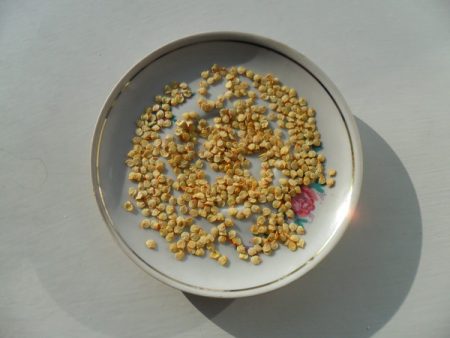
Properly selected and planted seeds are the key to a plentiful future crop. For this, seed is carefully selected, leaving only strong, large and beautiful seeds. Next, the seeds are poured with hot water and waiting for swelling. After the seeds increase in size, they are wrapped in a damp cloth and left for a couple of days until the seeds hatch. Only after all these manipulations, the seeds are planted in the prepared fertile soil. At this point, the seeds are ready for rapid growth, so seedlings will appear after 3-5 days.
For planting, not only seeds are prepared, but also the soil itself. The soil mixture should consist of humus, peat and land. You can also add a little sand, for better penetration of moisture into the soil. In order to disinfect the earth, the mixture is abundantly flavored with ash, and then everything is thoroughly mixed and sterilized at a temperature of 45-55 degrees (you can in the oven or microwave).
Sowing seeds
Usually seeds are planted in seedlings or special cassettes in rows. However, it is best to use separate peat cups, since peppers are very poor at picking.
Crops are carefully watered (it is better to choose a sprinkling method), and then cover with a film and put in a warm sunny place. If there is not enough light, then it is better to put a fluorescent lamp over the seedlings.
As soon as the first shoots appear, the film is removed from the boxes, and the temperature is increased to 28 degrees. At night, it is better to lower the temperature to + 15-17 degrees.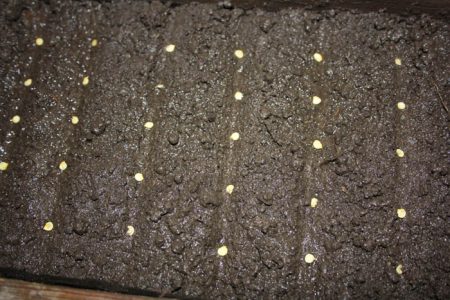
Humidity should be moderate, as in wetlands the seedlings will quickly hit the black leg.
Water for irrigation should be warm and settled.
Planting seedlings in the ground
After a dive, peppers begin their intensive development. From the moment of sowing seeds for seedlings to the planting of grown bushes on the bed, an average of 90-100 days passes (depending on the variety).
7-10 days before the solemn moment of planting plants in the garden, you need to start preparing young peppers for a new life on the street. To do this, the seedlings are tempered, taking out boxes with seedlings on the veranda or on warm days outside. The room is also gradually lowering the temperature, gradually accustoming the peppers to cool. Every day, the duration of walks is increased. And in recent days, you can leave the seedlings already on the veranda to spend the night.
Seat selection
It is important to choose the right place for the pepper bed. Bell pepper is a heat-loving culture, and therefore it needs sun. The place should be protected from the north winds, and also located away from tall bushes and fruit trees. Best planted on the south side of the site.
The shadow for pepper is fatal. If a lot of light does not get on the plant, it will stretch into growth, the influx of nutrients will decrease, and very few ovaries will form.
The best precursors for pepper are zucchini, pumpkin, cucumbers, melons, cabbage, legumes and perennial herbs. But in places where nightshade crops used to grow, peppers are not recommended to be planted, since after them harmful microbes can remain in the soil, which immediately attack pepper bushes.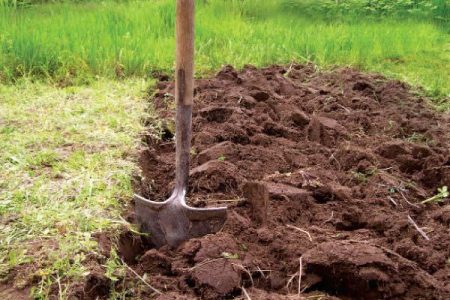
Pepper beds are set up on fertile, light soil with a neutral pH level. If groundwater passes close to the surface, then peppers will grow poorly, so you need to play it safe and make a bed at a height.
Soil preparation
Harvest of garden crops largely depends on the cultivation and preparation of the soil for sowing. If the land begins to be prepared in the fall, then initially everything is cleared of weeds. Autumn digging should be deep so that all the larvae of the pests are outside and die in the winter.
If the soil is clay, then organic matter (manure, compost or peat), as well as sand and ash per liter per square are introduced into it. During deep plowing, it is possible not to break up large lumps of soil, so the earth will better retain moisture after snow melts.
In the spring, they also dig the site, only this time the lumps are broken, and the ground is leveled. This time, mineral fertilizers such as nitrogen, potassium and phosphorus are added to the ground.
By the time the seedlings are planted, the soil should “ripen”, that is, dry thoroughly after winter. You can learn about the maturity of the earth by taking a handful of earth from a depth of 10 centimeters and throwing it from a height of one meter. If the lump has collapsed, it means that the earth has dried out and is ready for work. In waterlogged soil, seedlings will grow unevenly.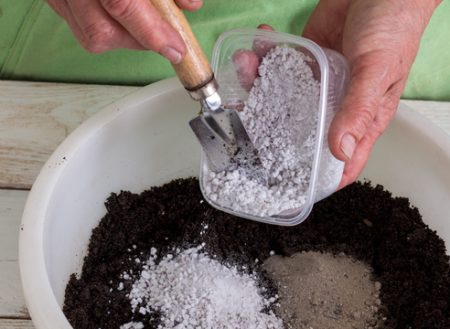
If the soil did not undergo soil treatment in the fall, then surely harmful microorganisms remained in its pores. Therefore, before planting seedlings, it is necessary to disinfect the beds with a solution of copper sulfate.
Landing time
Each crop has its own planting dates. Pepper, of course, is no exception. Pepper seedlings in open ground begin to be planted at the end of May, when the weather on the street is warm and dry, and the air temperature is set at a mark not lower than 17 degrees.
The maturity and complete readiness of the pepper for a new life on the street can be judged by strong stems, 7-8 completely opened leaves, as well as the beginning of the formation of the first flower ovaries. We must try to prevent overgrowth of seedlings, that is, at the time of planting, the bushes should not bloom, otherwise the plants will not survive the transplant.
The earth at this point usually warms up to 8-10 degrees, useful microorganisms come to life in it, thanks to which the seedlings will quickly get stronger and grow. The first month the bushes are protected from the night cold by film shelters and the mobile greenhouse is removed only by the end of June.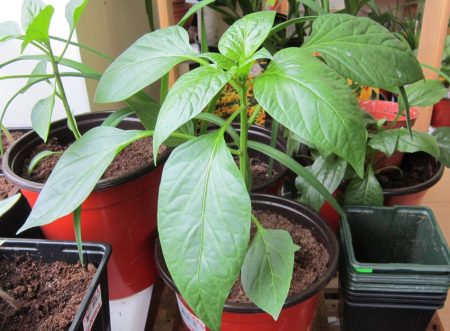
Important: pepper seedlings are planted in the greenhouse in April.
Landing plan
As already mentioned, peppers are very fond of warmth, so it is so important to provide bushes with uniform lighting. The thicker the plants are planted, the less each of them will receive light (and other nutrients), and accordingly, the fruits will appear later and they will be relatively smaller.
Pepper seedlings are planted in separate holes at a considerable distance from each other. Early ripe varieties are placed at a distance of 25-30 centimeters, leaving a minimum of 45-50 centimeters on the aisle. Ridges of mid-season peppers are removed from each other by 60-70 centimeters. Later types of sweet pepper need more spacious conditions, so they are placed about 35 centimeters from each other, and the aisles extend up to 70 centimeters.
Planting seedlings
Seedlings are planted on the bed immediately in peat cups, or gently pulled out of an ordinary container by the method of transshipment (that is, leaving a lump of earth on the roots) and deepened into a prepared hole. Before this, up to two liters of water are poured into the wells and a handful of wood ash and minerals is added.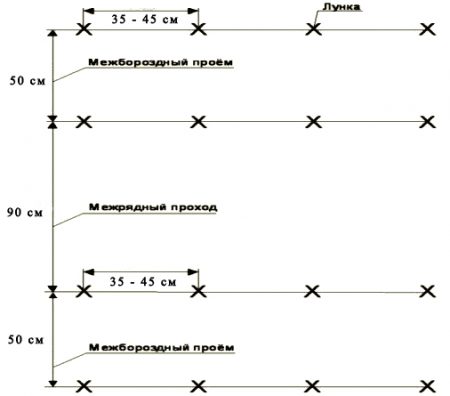
Planting plants should be at the same depth as peppers grew in seedlings. Depth - the junction of the stem and root system. The root neck should not remain deep underground, but it also does not need to be on the surface. After the bush is laid in the hole, it is sprinkled with earth, taking it slightly (but not ramming it) and watered with warm, settled water. When falling asleep with earth, do not allow the formation of an earthen hill, otherwise moisture will spread in different directions.
After landing care
Timely care for planting pepper will bring results in the form of a large crop of delicious quality fruits. Sweet pepper needs warmth, light and water.
Initially, as soon as the peppers are planted on the beds, the bushes are still weak enough to overcome the night cooling. Therefore, the first month (and during the cold summer and the entire growing period), the bed should be kept under film shelter. It is better to use a woven material that will retain heat inside and prevent the appearance of a greenhouse effect.
Pepper bushes need a constant influx of sunlight. Any shadow can cause a slowdown in the growth process. To avoid this, you need to conduct regular pinching and removal of the lower leaves.
Tall varieties of peppers require garter. Since there are varieties that can grow up to a meter and taller, such plants cannot cope with their weight and the severity of the fruit. Therefore, a strong stake is put to each bush, to which the plant is tied according to the degree of its growth.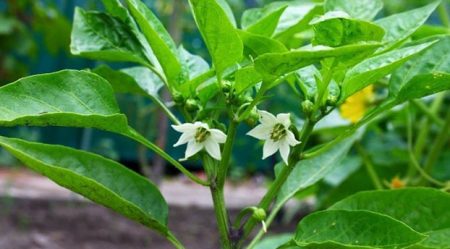
You should also regularly weed the pepper bed from the weed, and if necessary, spud the bushes.
Peppers are self-pollinating plants. But, to help them do their job, it’s useful to involve pollinating insects in this process. To do this, you can spray the plants with a sugar solution.
Watering pepper
Pepper seedlings take root quite slowly in the new conditions. Most often, you can see that the bushes faded and look sick.However, at this time, the main thing is not to overdo it with watering, since many summer residents are in a hurry in this way to help the plants come back to normal and thereby pour young peppers.
However, it should be borne in mind that leaf wilting after planting is a natural process. Therefore, the first weeks of watering the bushes should be 3 times a week with warm, settled water. Watering is necessary under the root, so as not to touch the leaves. During fruit formation, the frequency of watering is increased - now the bushes need up to 4-5 liters per day. Based on this, watering is best done a little more often.
If the weather is hot, the flowers can fall, and the formation of ovaries stop. Pollen becomes sterile. Therefore, it is so important to maintain water balance and in such periods to switch to daily irrigation by sprinkling.
Fact: lack of moisture leads to weakening of the whole plant organism, which is fraught with a decrease in yield.
Trying to protect peppers from drought, many gardeners come to the other extreme - waterlogging of the earth. This can provoke the formation of fungus in the pores of the soil and the infection of the underground part of the bushes with rot or mold.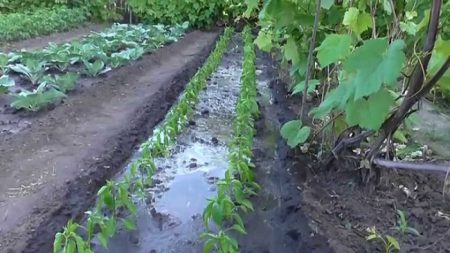
To keep the golden mean, experienced vegetable growers mulch the ground under the bushes. Mulch in the form of sawdust or dried grass can keep the soil moist for a long time and protect the roots from overheating.
Loosening
Loosening is another important agricultural technique in caring for a crop like pepper. This procedure creates a favorable background for moisture penetration into the soil and air flow to the roots.
Loosening allows you to whip the ground so that it does not form a dry crust that overlaps the pores through which the life-giving forces of water and oxygen enter the plant.
For the first time, loosening is carried out 5-6 days after transplanting seedlings on the bed. It is better to loosen the earth with a small hoe, slightly raising the top layer of soil. The first times they loosen only superficially, since the roots of the pepper are unusually fragile and any movement can damage them.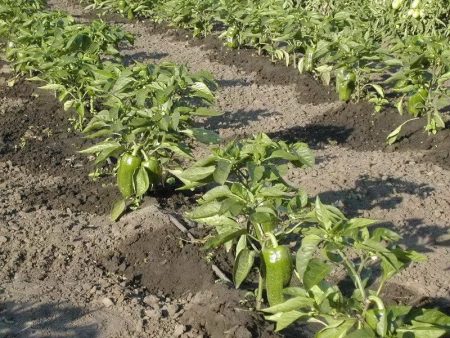
Use of loosening:
- air exchange improves;
- the plant grows faster, and the root becomes stronger;
- the functioning of beneficial microorganisms is stimulated;
- weeds are destroyed.
If the soil on the site is heavy, lumpy, then you need to loosen the earth more often so that water does not stagnate and the fungus does not develop. Loosened earth will be better ventilated.
Feeding
First step
The most important factor in the fertility of bell pepper is the timely application of fertilizers. Peppers growing in open ground need recharge, moreover, regular and varied in composition. The first top dressing is introduced during the seedling period, when 2-3 leaves appear on the bushes. As fertilizers, a composition of water and ammonium nitrate is used. It is also necessary to nourish the plant with potash fertilizer and superphosphate.
The second top dressing is carried out two weeks after the first fertilizer application. They are also fertilized with minerals. Feeding pepper bushes with a special mixture of water and nettle is effective.
The last feeding of seedlings is carried out several days before the seedlings are planted on the bed, increasing the potash element in the composition of fertilizers.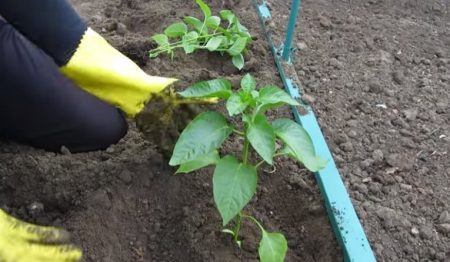
Second phase
As soon as the peppers are planted in open ground, the second stage of recharge begins. During this period, not only mineral fertilizers are used, but also organic. Best in this regard are chicken litter or humus.
At first, plants need to increase their vegetative mass, for which they arrange root dressing with nitrogen. Peppers also need potassium and phosphorus from minerals.
The first top dressing is carried out 10-14 days after transplanting seedlings in open ground. The main nutrients included nitrophoska, bird droppings and water. This mixture is poured under the root of the plants.
When the peppers bloom, it is time for a second top dressing. So that plants have strength and powerful resources for the formation of fruits, they need potassium. There is a lot of it in wood ash, so you can sprinkle pepper bushes with ash. You can also fertilize the bushes with a mixture of urea, humus, droppings and water.
The last top dressing is carried out to stimulate the growth of fruits. Potassium salt and superphosphate contribute best to fruit loading. This composition needs to be sprayed with bushes.
Tip: nitrogen in large quantities should be used only in the first month, otherwise the plants will “fatten”, that is, the tops of the plants will grow to the detriment of the formation of bud buds and subsequently fruits.
Peppers Formation
All peppers need a bush formation. This procedure helps a lot with better ventilation and illumination of plants.
The method of formation is chosen depending on the variety: if the plant is tall, then you need to trim and remove the extra shoots, and pinch the top to stop growth; in undersized pepper species, the lower shoots, as well as non-bearing branches, are cut off.
Rules for the formation of pepper bush:
- When the plant reaches a period when fruitful branches begin to grow on it, the first crown bud blooms in the internodes. It must be removed so that the process of branch development proceeds more intensively.
- For better growth of the bush, leave 2-3 main shoots on it (the formation of three stems). These main shoots are the strongest and well-developed branches, which will give the main crop. The remaining stepsons pinch, leaving one bottom sheet. Tip: extra shoots are removed so that they do not take nutrients from the main stems.
- The buds formed in the internodes are removed.
- The lower leaves are removed from the bush, which interfere with normal ventilation.
- During the development of the plant, it must be periodically examined and sterile shoots identified. They are immediately removed. These processes originate below the branching site of the main stem.
- Be sure to remove all yellowed or damaged leaves, as they can affect the entire plant with any disease. Tip: if you do not remove the extra leaves, then at the place of flowering, the fruits will not be tied.
- Often a plant forms a lot more ovaries than it can overpower. However, many gardeners think that the more buds, the higher the yield. But more often it is the other way around: a plant wastes power. It is worth taking into account the fact that 17-19 flowers will be optimal for one bush, the rest should be urgently removed. If the flowers appear in a later period, they also need to be removed, since they only weaken the plant and do not increase the number of fruits. Therefore, it is so important to pinch all newly emerging buds after a sufficient number of flowers has already formed.
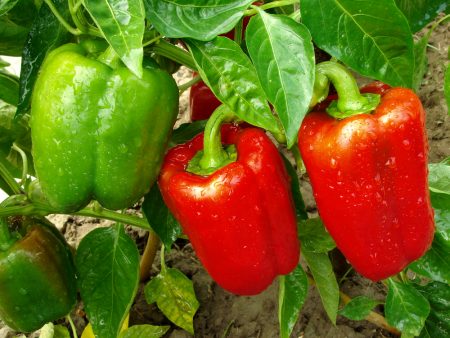
Leaf pruning:
- When the fruits ripen sufficiently on the lower brush, the leaves are trimmed on the main stem. It is important not to trim them all, but to do it gradually, or rather, remove two sheets a week.
- As soon as the peppers also ripen on the second brush, a second crop is performed.
- Next, a similar procedure is carried out when the fruits ripen on all other hands.
- Trim leaves finish one and a half months before harvesting.
Protection against diseases and pests
Plants growing in open ground are more likely to suffer from diseases than those that are reliably hidden from ailments in greenhouses. Peppers, unfortunately, get sick often. They are especially keen on improper care. If you do not follow the rules of agricultural technology, then most likely the bushes will fall ill.
Common pepper diseases:
- Late blight is a fungal infection of the fruit of the pepper. Dark spots appear on the vegetables. It is necessary to treat the disease with such drugs as Oksikhom, Barrier, Barrier. It is reasonable to apply these funds only the beginning of flowering bushes.
- Fusarium- Another fungal disease that manifests itself in the yellowing of pepper leaves. Affected bushes are immediately removed, and healthy specimens are carefully looked after, in time conducting all agricultural practices and avoiding overmoistening and weeds of the site. Tip: in the area where sick peppers grew, it is better not to grow this crop anymore.
- Bronzeorspotted wilting - a fungal ailment manifests itself on leaves that are strewn with dark spots with a purple tint. During the development of the disease, the top of the trunk of the plant dies, and the fruits are also affected by spotting. The fungus is killed with the drug Fundazole. Healthy fruits are removed from the bush before processing.
- Vertex rot is a disease in which large black spots appear on the fruits. There may be several causes of the disease - this is a lack of moisture in the soil, and an excess of nitrogen and calcium. Sick bushes are eliminated, and healthy seedlings are treated with calcium nitrate.
- Column or Phytoplasmosis is a complete defeat of the plant. The roots of the plant rot, the bushes stop growing, the fruits are small and ugly, lose their taste, the leaves turn yellow, twist. Often the cause of the occurrence are the circadian plants that carry this disease. To protect peppers from this terrible disease, peppers are processed Acara immediately after planting and before the first flowers.
- The black leg is a disease that affects the stem at the root. As a result, the stem degenerates and breaks off. The disease occurs due to the density of plantings, as a result of which the plants are poorly ventilated and spores of the fungus gradually appear on them. Prevention of this disease is carried out with special drugs that can be used only before flowering begins. If the soil is too moist, it should be sprinkled with ash. Unfortunately, this disease is practically not treated, so the affected bushes will have to be removed from the garden.
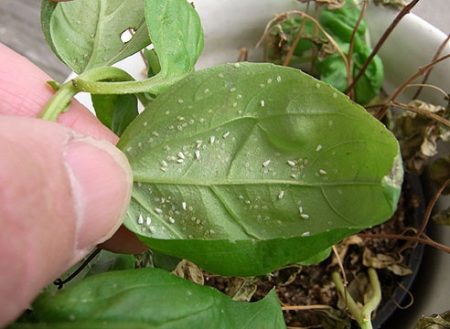
Pests also annoy pepper plantings, sometimes causing significant damage to the crop.
The most dangerous insects for pepper are parasites:
- aphid;
- spider mite;
- wireworm;
- slugs.
Each of these pests in its own way affects pepper bushes. So the wireworm gnaws the roots of plants. You can get rid of it by digging the earth in a timely manner and placing baits in the form of sweet fruits, to which these insects will crawl. Thus, they can be collected and destroyed.
Forget about slugs will help scattered on the site of a nutshell, ground pepper. Pests will also start hunting for food, and you just have to collect piles of slugs and remove from the garden.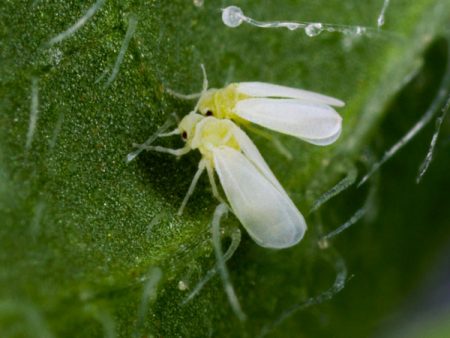
Fighting with the bear, just before planting in the holes, a little onion infusion is poured, which will scare away the pest from the sweet pepper roots for it.
From aphids helps a solution of whey and water.
Spider mites settle on the inside of the leaves and suck the juice from them. You can get rid of it using chemistry or resorting to folk methods: mix liquid soap with chopped onions or garlic and dandelion leaves. This solution is sprayed with pepper bushes.
Reviews
Tatyana
Every year I grow sweet peppers in an open garden, as I do not have a greenhouse. Seedlings I always get good: all the bushes are strong, juicy. I plant seedlings in mid-May under a film shelter. Peppers tolerate transplants very well, maybe, of course, it depends on the soil - we have it is very fertile, and we fertilize it regularly. One problem I have with peppers is that they do not grow as thick-walled as we would like. And the size is also not large, although I choose varieties with large volumes of fruits. In the greenhouse, I think they would grow better.
Marina
For open ground, I always choose precocious varieties of bell pepper or hybrids. I always take two or three different varieties, since one of them always grows weak. This fact has been tested by time. Peppers are also very fond of light, and therefore always triple the beds only in the open area.
So that the seedlings do not hurt after transplanting and quickly take root, I never allow its overgrowth. Seedlings should never bloom! I sow the seeds in mid-March, not earlier, to prevent the formation of flower ovaries out of time. In order for the bushes to develop correctly, in the second portion of fertilizing, which I arrange after the bushes blossom, I use an infusion of ash.
Inga
I grow peppers both in the greenhouse and in the open ground. The place under them I choose is bright, windless, next to grapes and a greenhouse. I plant always blooming seedlings, and it takes root with me wonderfully. I grow seedlings without picking, maybe that's why it grows strong with me, with immunity. First, I cover it with a non-woven fabric, as it retains heat well and the climate under it is what young pepper needs. Then, from the middle of June, I’m not covering anything. After landing on the garden, I always try to mulch the ground with dried grass. So the roots are reliably protected from the heat and from the cold, which are in our area in the middle of summer. I mulch a couple of times during the summer. Peppers always reach biological maturity directly on the bush.




 Calorie pepper stuffed with meat and rice - BZHU per 100 grams
Calorie pepper stuffed with meat and rice - BZHU per 100 grams Gorky pepper - the best varieties for open ground
Gorky pepper - the best varieties for open ground Hot pepper seeds - the best varieties for open ground and reviews
Hot pepper seeds - the best varieties for open ground and reviews Capsicum tincture for hair - how to use and reviews
Capsicum tincture for hair - how to use and reviews